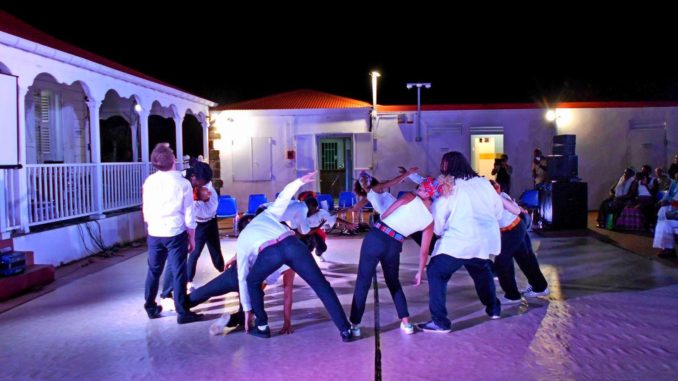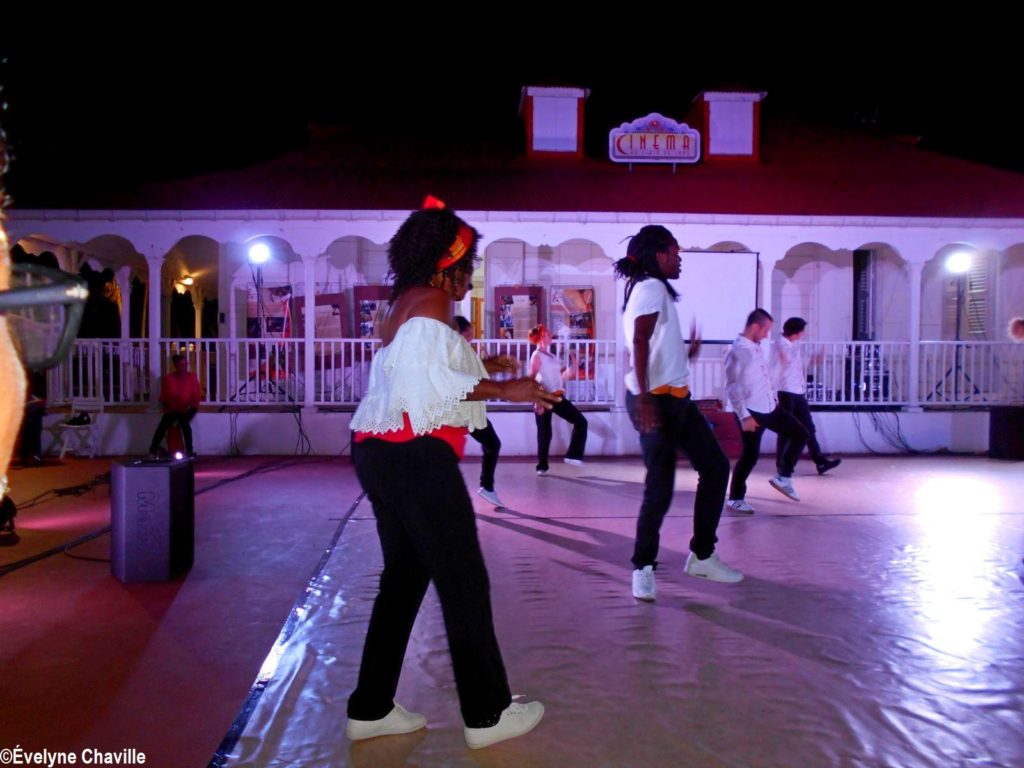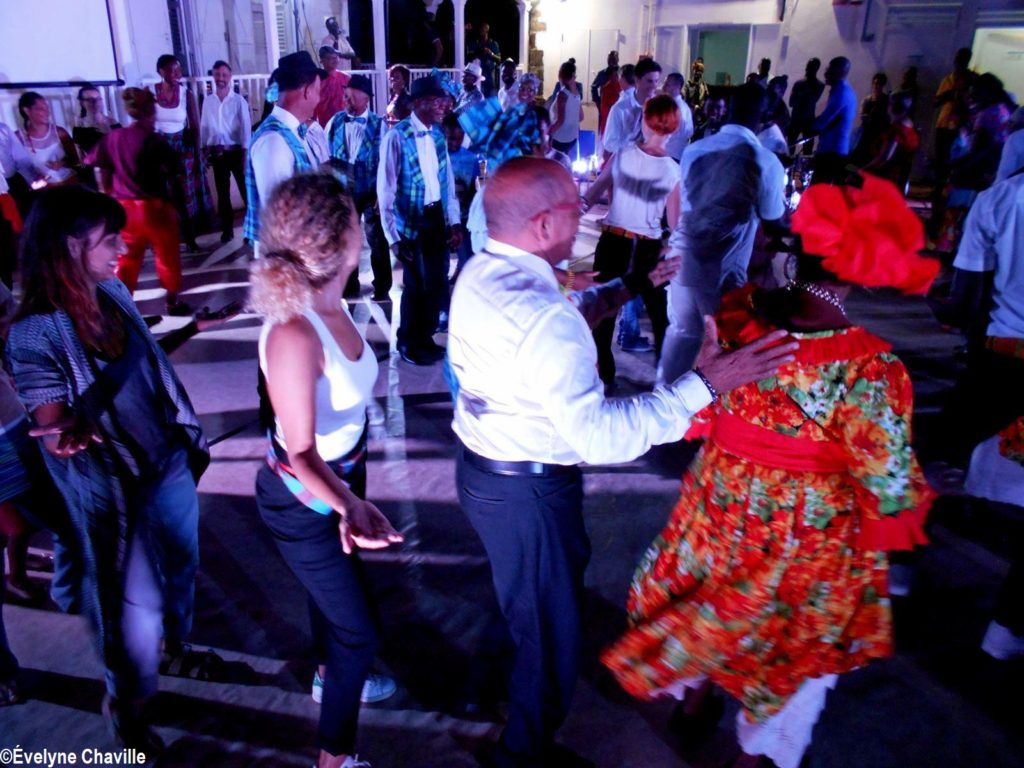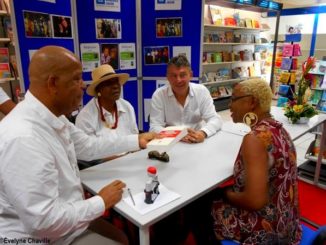
On Saturday, April 21st at 7:00 pm, the “Difé Kako Company”, managed by Guadeloupean dancer Chantal Loïal, invited the audience to a danced-conference entitled “Cercle égal demi-cercle au carré” at La Ramée house in Sainte-Rose. The associations “Soleil du Sud”, “L’Âme des Roses” and “Repriz” as well as the writer Isabelle Calabre were associated with this evening of restitution devoted to Creole traditional dances. Writing workshops on dance took place on April 25 and 26.

In residence since the beginning of April at L’Artchipel Scène Nationale in Basse-Terre, Guadeloupean dancer Chantal Loïal and her company “Difé Kako” came to show their work at La Ramée house in Sainte-Rose, this Saturday, April 21. The spectators were of all ages and participated with enthusiasm in this evening to share traditional local dances. The next creation of the troupe, based in France for 25 years, is entitled “Cercle égal demi-cercle au carré” and proposes to explore the evolution of these dances that emerged in the 18th century in France, then arrived in the New World with slavery and are still practiced today by local people. These include quadrille from Guadeloupe, haute taille from Martinique, boulangère from French Guiana without forgetting mazurka, biguine that the “Difé Kako Company” decided to merge with contemporary dances like hip hop, ragga or krump.

A tribute to the accordionist “Négoce”
This project initiated in 2017 led the troupe to do research on the contra dances in France then to stay in Guiana, Martinique and Guadeloupe in order to meet those involved in these dances. The future choreographic and musical play will be created in November 2018 and will be performed by 8 dancers and 4 musicians.
During this cultural evening animated by the members of the “Difé Kako Company”, a tribute was paid to elderly musicians, in particular to Iréné Reynoir Casimir called “Négoce”, Guadeloupean talented accordionist and a fan of traditional dances especially quadrille, who died in December 2017 at the age of 68. “Repriz”, the Regional Centre for Traditional and Popular Music and Dances of Guadeloupe, came to share its actions to collect, preserve and spread the intangible cultural heritage of the island. Two quadrille associations – L’Âme des Roses” from Sainte-Rose and “Soleil du Sud” from Le Baillif – offered several dances with the participation of Nita Alphonso, one of the few women who “command” the Guadeloupean quadrille which means telling the dancers the various figures to perform (poule, été, pantalon etc). As for Isabelle Calabre, writer and journalist who was in residence at La Ramée house until April 26, she talked to the audience about her future book entitled “Contredanses et Quadrilles Créoles : Identités, Esthétiques et Histoire”. To close the event, choreographer Chantal Loïal invited the spectators on the dance floor to dance with her troupe and both quadrille groups. A great moment of sharing and joy…

Writing workshops for young people and seniors
These residences were the subject of interactions and meetings with the public. So, on Wednesday, April 25, Isabelle Calabre taught a collective writing workshop whose theme was “Le quadrille d’autrefois” with the participation of the seniors of the association “L’Âme des Roses”; in another workshop whose theme was “Deviens reporter” organized on Thursday, April 26, the writer received the secondary school students from La Boucan, Sainte-Rose, who had to write a review and a report based on photos and videos made during this danced-conference on Saturday, April 21.
“From January to July, the programming of La Ramée house is entitled “Passeurs de Mémoires”. We have already hosted four artists in residence: Nicolas Dernée (photographer), Ronald Cyrille (painter), Sébastian Drumeaux (musician) and Isabelle Calabre (writer). The artists are deeply moved by this place which is full of history. Our aim is to offer opportunities of work, experiments, exploration, exchange and creative dialogue in an environment conducive to inspiration. Here, the artists can think and create peacefully”, said Audrey Phibel, the executive in charge of the artistic programming in La Ramée, an 18th century mansion where worked slaves which became an artists’ residence in 2002.










































